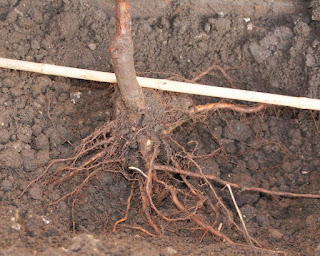With the first month of the new year behind us, gardeners are focused on one thing ... the countdown to spring. We know in Colorado dates don't necessarily equate to the exact time or window to actually start planting outdoors. We often get snow in May. An excellent resource for climate summaries in Colorado that may also help you plan, click
here.
When are all the best windows of indoor and outdoor seeding, planting and firing up the outdoor grill? You've come to the right place, all my seeding and planting charts are here in one blog location. As for the grill, why even put it away for the season - we use ours all year.

For newbies or a review, here is a summary of the
outdoor growing seasons along the Front Range. Add a couple of weeks or more for higher elevations. These windows and my charts below should help you plan when you'll start seeds indoors or direct seed outdoors or when the tomato plants purchased over Mother's Day weekend go in the ground.
There are three overlapping seasons to plant and direct seed outdoors. The cool-season planting
period ranges anywhere from March to the first of May. These include
cool-vegetables like spinach, peas and beets and cool-season annuals
like pansy, calendula and sweet peas. Keep in mind that cool-season planting or direct
seeding is all dependent on the weather - if snow is on the ground or
it's raining or snowing from mid-March to mid-May, the cool-season
planting window may either be delayed or skipped. Using tunnels, row
covers and cloches are recommended if the weather isn't cooperating.
The
warm-season window is anywhere from mid-May to the first of July and
includes herbs like basil, vegetables - tomatoes, peppers, squash and
corn, plus annuals - petunias, marigolds, sunflowers and cosmos. Hardy
perennials, shrubs and trees can be planted during this time as well and
all the way to early fall. The exception is to try to avoid planting
when temperatures are extremely warm. It can be done, but pay close
attention to watering and providing some shade.
Mid-summer is when the
third season planting window begins - mostly cool-season vegetables that
mature in sixty days or less and warm-season crops that also have a
shorter maturity date like summer summer squash, okra and basil.
The timing, seeding and planting information on seed packets vary per company. Some mention soil temperatures or map zones as guides to direct seed
outdoors, or a certain number of days from frost dates to start seeds
indoors. Pay attention and familiarize yourself with the seed packet
information. My charts try to accommodate most seed company packages. For tips on reading packets -
Understanding the Seed Packet.
Vegetable
seeds that you need to get started very soon indoors for early
transplanting out in March to April include - broccoli, Brussels
sprouts, cabbage, parsnips, onions and celery. Tunnels or cold frames
are recommended for early planting when freezes and frosts are the
norm. Soil conditions need to be spot on too, not too wet, frozen or cold.
Keep
in mind that if you miss the window to start your seeds indoors, you
can always purchase cool-season transplants at garden centers starting
in late winter into spring, and later in the spring for warm-season
plants. Warm-season seeds are generally started indoors in late March to April for
late May transplanting.














